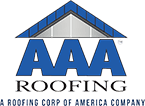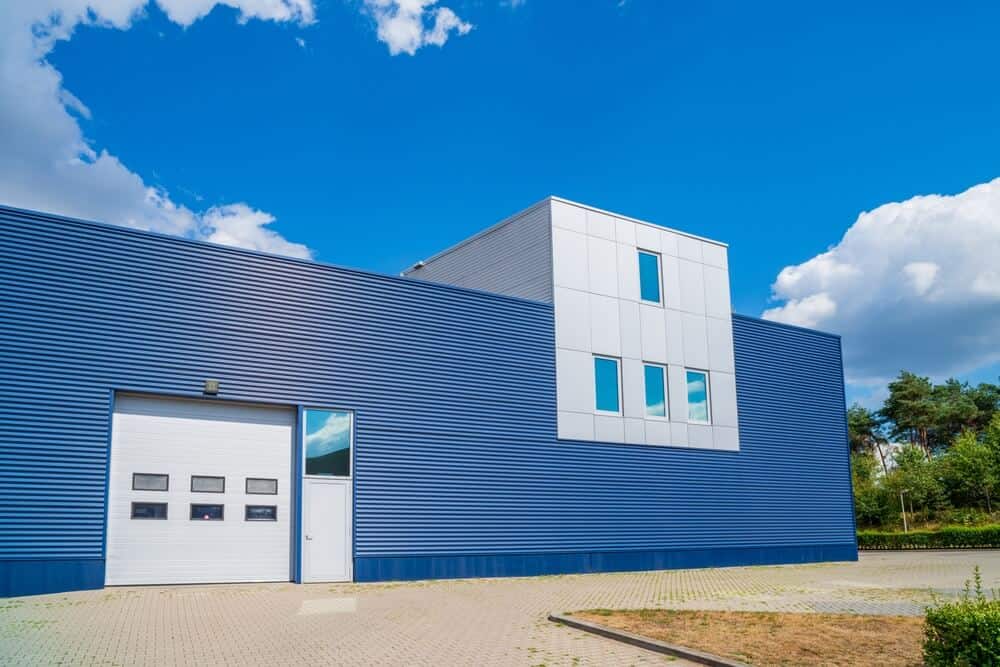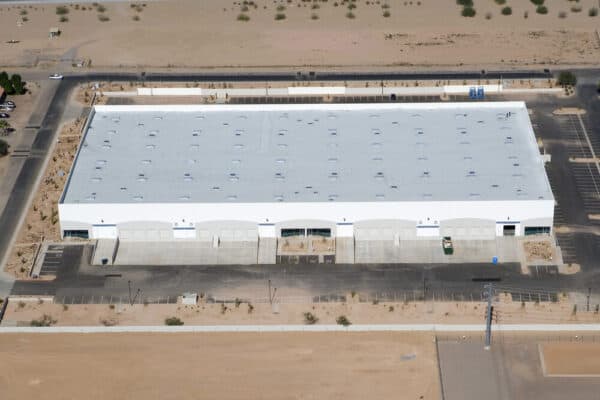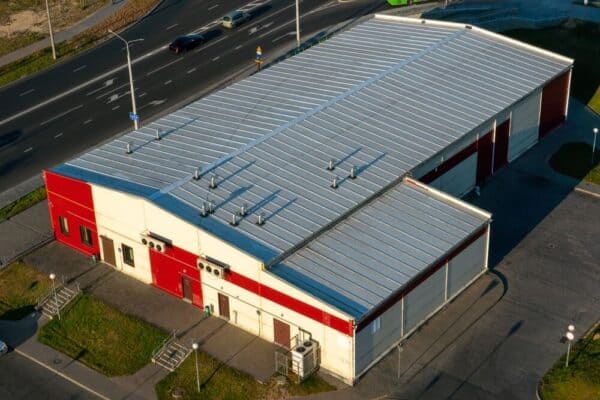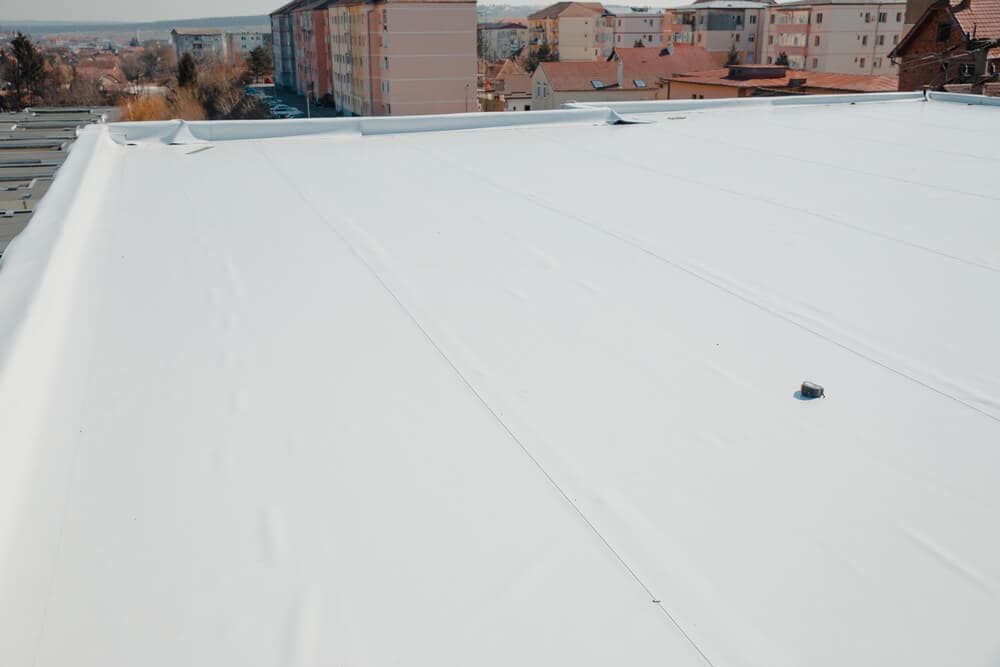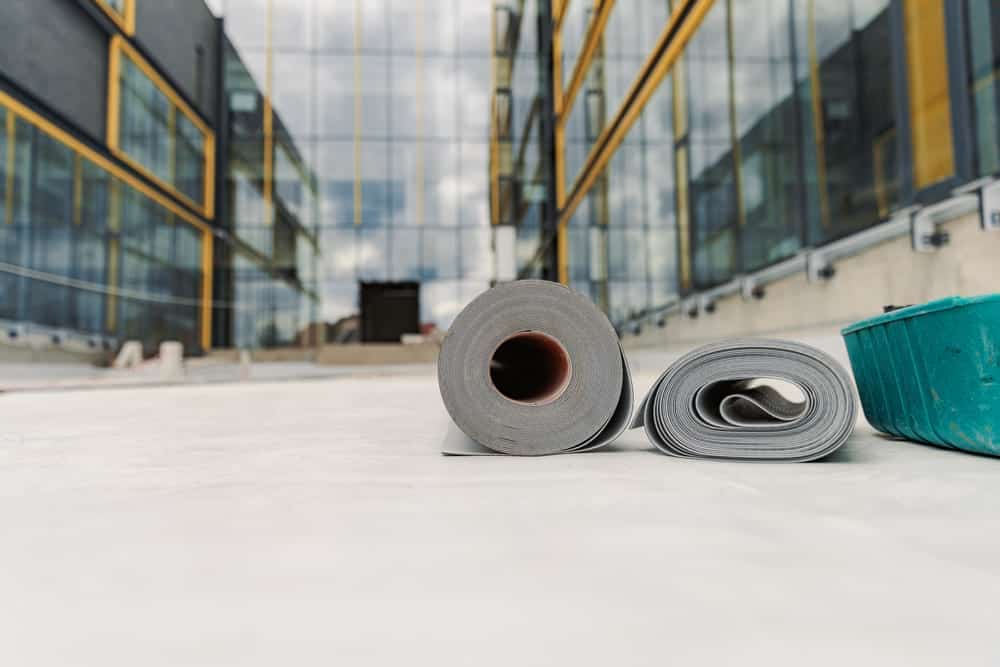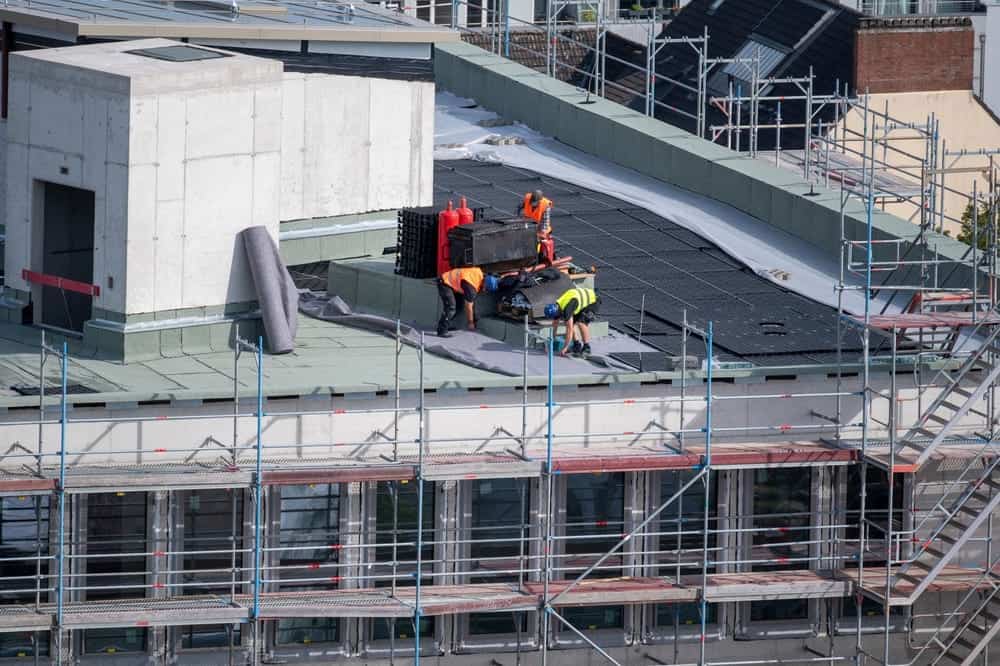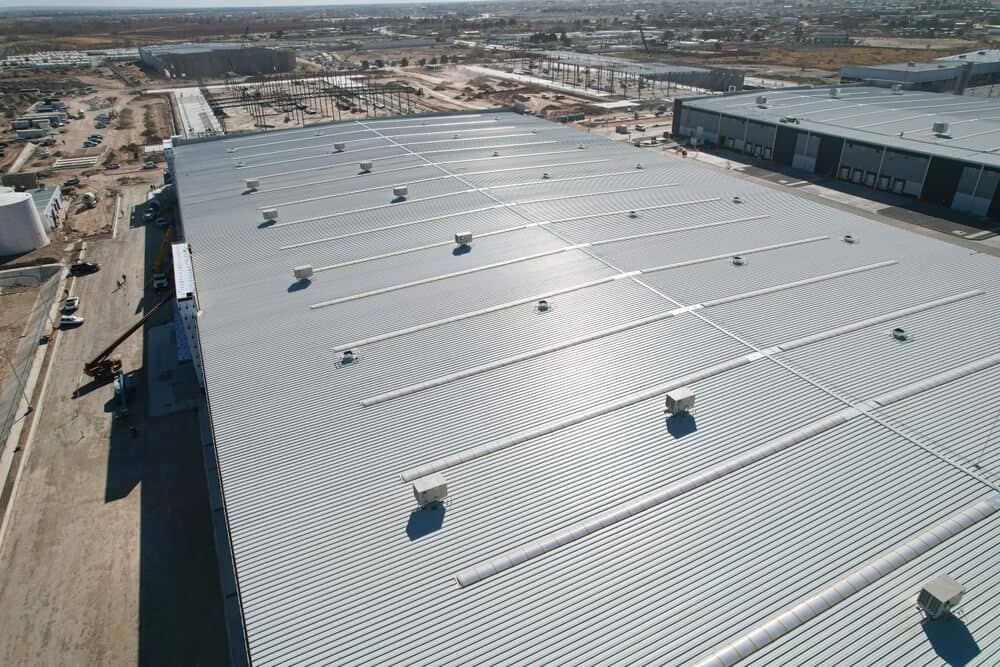Whether it’s protecting products, equipment, vehicles, or even offices, a warehouse’s roof needs to be tough and suitable for the task at hand. There are many different types of warehouse roofing systems to choose from, each with its pros and cons as they apply to installation, cost, and effectiveness. This guide on these different warehouse roof materials will explain some of the most popular options so our customers can make the best decisions for their warehouses.
Contents
Understanding Warehouse Roofing Needs
Warehouses don’t really have unique needs from their roofing systems. Just like any other structure, the roofing system has to protect the products, equipment, and people inside from precipitation, heat, cold, and other elements. However, some specifics apply to the specific buildings that property owners might consider.
At a minimum, a warehouse’s roof needs to be watertight, but it should also aim to reduce operating costs and keep maintenance to a minimum. If possible, it should strive to improve energy efficiency, and as a final consideration, improve the building’s appearance. For these reasons, property owners should consider the climate in which the building exists, the types of work performed inside the building, local building codes, and roof structure.
For instance, a facility that specializes in cold storage will need more insulation from its roofing system than a warehouse full of heat-emitting equipment. Similarly, a building with a flat or low slope roof might be an excellent option for single-ply roofing systems, while a steeper-pitched roof (somewhat rare in warehouses) would not be a good candidate for single-ply.
Types of Warehouse Roofing Options
Given all of the different types of warehouses and purposes they serve, one can easily understand why there are so many suitable roofing materials. Here’s a bit of information on all of the different types of warehouse roofing systems, our team at AAA Roofing would be happy to discuss each surface further to help you find the right fit for your commercial warehouse building.
Metal Roofs for Warehouses
Metal roofing is often the best choice for a warehouse for a number of reasons. Property owners prefer them because they’re long-lasting, sometimes lasting as much as 50 years before requiring replacement. Also, metal roofs have relatively low maintenance costs and requirements, protecting the building quietly from above with just an annual cleaning and inspection, for the most part.
There are a few different metal roof materials to consider. Steel roofing materials options are the most affordable, and they’re long-lasting. Aluminum roofing is another popular choice due to its durability, reflectivity, and corrosion resistance as well as its lifespan, and lightweight nature, but it’s more expensive than steel. Zinc roofing is more expensive yet but is even more durable as well as highly resistant to salt, pollutants, and chemicals.
There are two types of roofing panels, as well. Standing seam roofs don’t have any exposed fasteners so they look sleeker and generally leak less often than exposed-fastener systems. However, exposed fastener systems are easier to install and are generally less expensive.
Single-Ply Roofing Systems
Single-ply roofing systems are so called because they’re made up of membranes that apply in one layer, unlike built-up roofing systems and we’ll cover more on that in a bit). There are several different types of single-ply roofs, but all of them serve as a waterproof membrane that is relatively easy and affordable to install.
TPO (Thermoplastic Olefin)
Thermoplastic Olefin (TPO) is one of the newer single-ply roofing materials and it’s made up of a synthetic rubber and a reinforcement fabric. The material is puncture and tear-resistant, and its reflective coating can help reduce cooling costs for warehouses in hot climates. It’s suitable for flat and low-slope roofs, and it can be expected to last 20 to 25 years with regular maintenance.
EPDM (Ethylene Propylene Diene Monomer)
Ethylene Propylene Diene Monomer (EPDM) is another option. It’s longer lasting than TPO (over 30 years in many cases), and it offers excellent weather resistance and repairability. It’s typically black, which means it can absorb heat, but it’s easy to install and typically affordable.
PVC (Polyvinyl Chloride)
Polyvinyl Chloride (PVC) looks similar to TPO and has some similar properties. It helps reflect sunlight and UV rays to lower cooling costs and forms a durable layer of protection that lasts up to 30 years.
Modified Bitumen Roofing Systems
Modified Bitumen, or mod-bit, roofing is a multilayered roof made up of alternating plies of roofing fabrics or sheets and petroleum-based asphalt materials with modifiers added. These modifiers make the asphalt more flexible and allow it to withstand high temperatures and UV rays better. The final layer is capped with either granules for grip or foil for reflective properties. They typically last up to 30 years with regular maintenance.
Modified bitumen roofs can be solid options for low-slope warehouse roofs. However, roofs greater than 3:12 in pitch aren’t great candidates. Also, mod-bit is labor intensive to install so they can be expensive to install though the materials themselves aren’t excessive.
Built-Up Roofing Systems (BUR)
Built-Up Roofs (BURs) are some of the most old-school of warehouse roofing options. These systems include multiple layers of roofing felts (underlayment materials) and layers of asphalt over top. As the name suggests, they can be built up several layers, with the final layer getting a coating of gravel, granules, or a reflective coating.
BURs are durable and certainly long-lasting. However, they’re heavy and labor-intensive to install. They’re generally not ideal for warehouses with steep slopes, those with roofs that can’t bear the weight, and even warehouses in hot climates as the layers can absorb quite a bit of heat.
Liquid Applied Roofing and Coatings
Liquid-applied roofing and coatings, like SPF, are applied over the top of existing roofing materials. They can be sprayed or painted on, and they can be silicone-, acrylic-, or polyurethane-based.
These roofing systems are ideal for flat or low-slope roofs that might be nearing the end of their service life, offering an affordable way to reseal that existing roof system and reduce the building’s energy costs (they’re great for reflecting UV rays). Not only are they affordable, but they’re also easy to apply, as long as the existing roof structure is in reasonably good condition.
Considerations for Existing Roofing Structures
There are a few other things to consider when choosing your warehouse roofing material and style. For one, make sure to consider the age of the existing roofing structure, its condition, and its compatibility with the roof system. BURs will be too heavy for undersized framing, while single-ply roofs aren’t suitable for steeper slopes.
Also, consider the feasibility, cost, and benefits of retrofitting a new system or repairing the existing system. Liquid applied coatings can help restore the life of an older roof, but if there has been damage, it’s more cost-effective to simply replace the roof. Also, compare the energy usage improvement between the different material types to see which is most worth it. Our experts can help with that.
Installation and Maintenance
Equally as important as the material chosen are the installation and maintenance. A property owner could choose the very best metal roof and it won’t be as effective as it could be if it isn’t properly installed. That’s why it’s important to choose a knowledgeable and established roofing contractor to install your warehouse’s roof.
Also, don’t forget about maintenance. No roof system will last as long as it could if it doesn’t receive the required amount of proper maintenance. Regular inspections and minor repairs will help prevent bigger issues, They’ll also help maintain the roof’s existing warranty as many manufacturers require detailed maintenance records.
AAA Roofing can assist with both. We have over 35 years of experience installing roofing systems on commercial buildings and warehouses. We can help you choose the best material for your roof based on the building’s design and purpose. Our experts can also help set up recurring maintenance, allowing us to manage our roof and its warranty to ensure you get as much out of both as possible.
Contact AAA Roofing today for your free consultation.
